
any note of a scale or a temperament.
with enharmonic differences (G♯ may be different from A♭).
at any pitch and with transposition;
pure intervals.
simple musical phrases according a specific scale or temperament.
Look at the intervals defining a scale or temperament in a variety of formats.
Define your own scales and temperaments.
Shift temperaments up and down the circle of the fifths.
Up to 35 notes per octave (from C♭♭ to B♯♯).
Temperament data can cover any portion of the F♭♭ - B♯♯ range of fifths and even contain 'holes' (undefined notes).
Full enharmonic keyboard: each key can be set to any of its enharmonic equivalent, if the selected temperament includes more than one. So, the black key between G and A can be set as G♯ or A♭, the F key can also be set as E♯ or G♭♭ and so on.
Display of frequency and deviation from equal temperament of the note being played.
The A pitch can vary from 370 Hz to 523 Hz with presets for the most common pitches.
Keyboard transposition from major 7th down to major 7th up.
Temperament shift by fifths from 7 fifths to the left to 7 fifths to the right.
Automatic determination of best default enharmony.
Pure 3rd (maj. and min.), 4rth, 5th and 6th (maj. and min.) of the last pressed note key.
Note keys may work as keyboard keys (play while pressed) or as toggles (press to start - press to stop) to ease tuning.
Temperament data can be viewed and entered as: fifth intervals (from F♭♭ to B♯♯) or scale steps relative to either C or A;
using cents, decimal numbers and even ratios ("16/15") or temperament-specific constants (like "1/4 of syntonic comma").
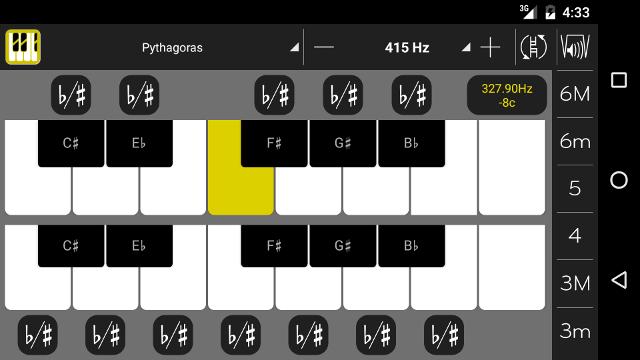
Pythagorean Scale; default display
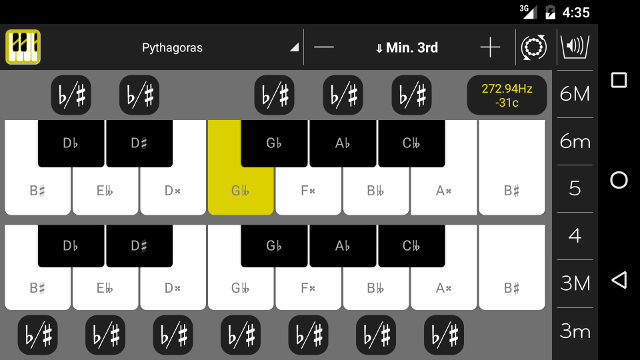
Pythagorean Scale with keyboard transposition and all keys enharmonically redefined
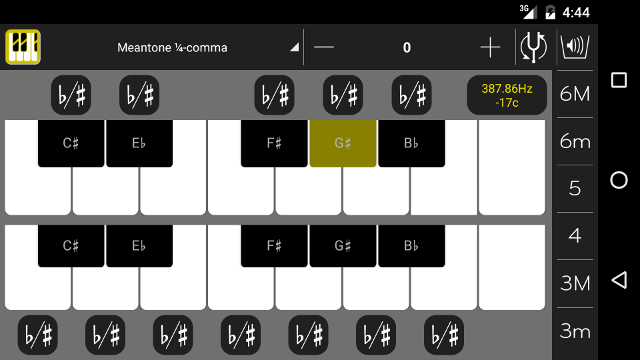
Meantone 1/4-comma temperament; default display
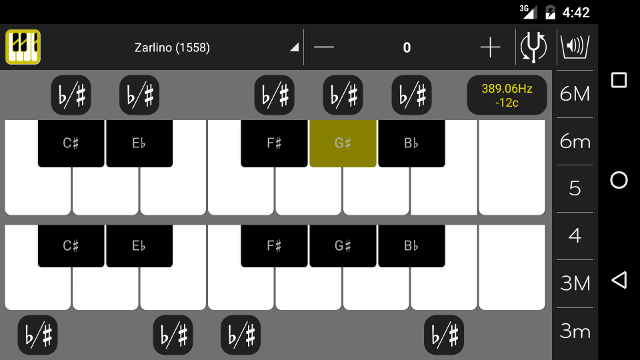
Zarlinian Scale; default display
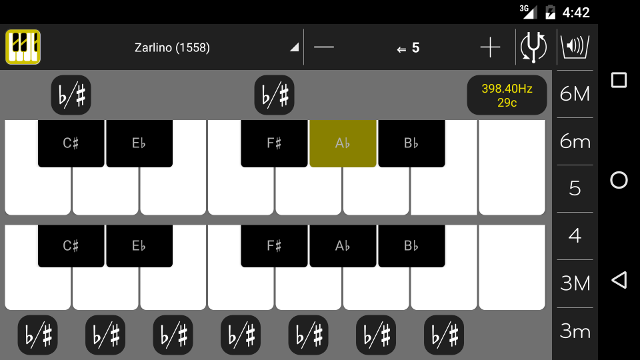
Zarlinian Scale; shifted 5 fifths to the left